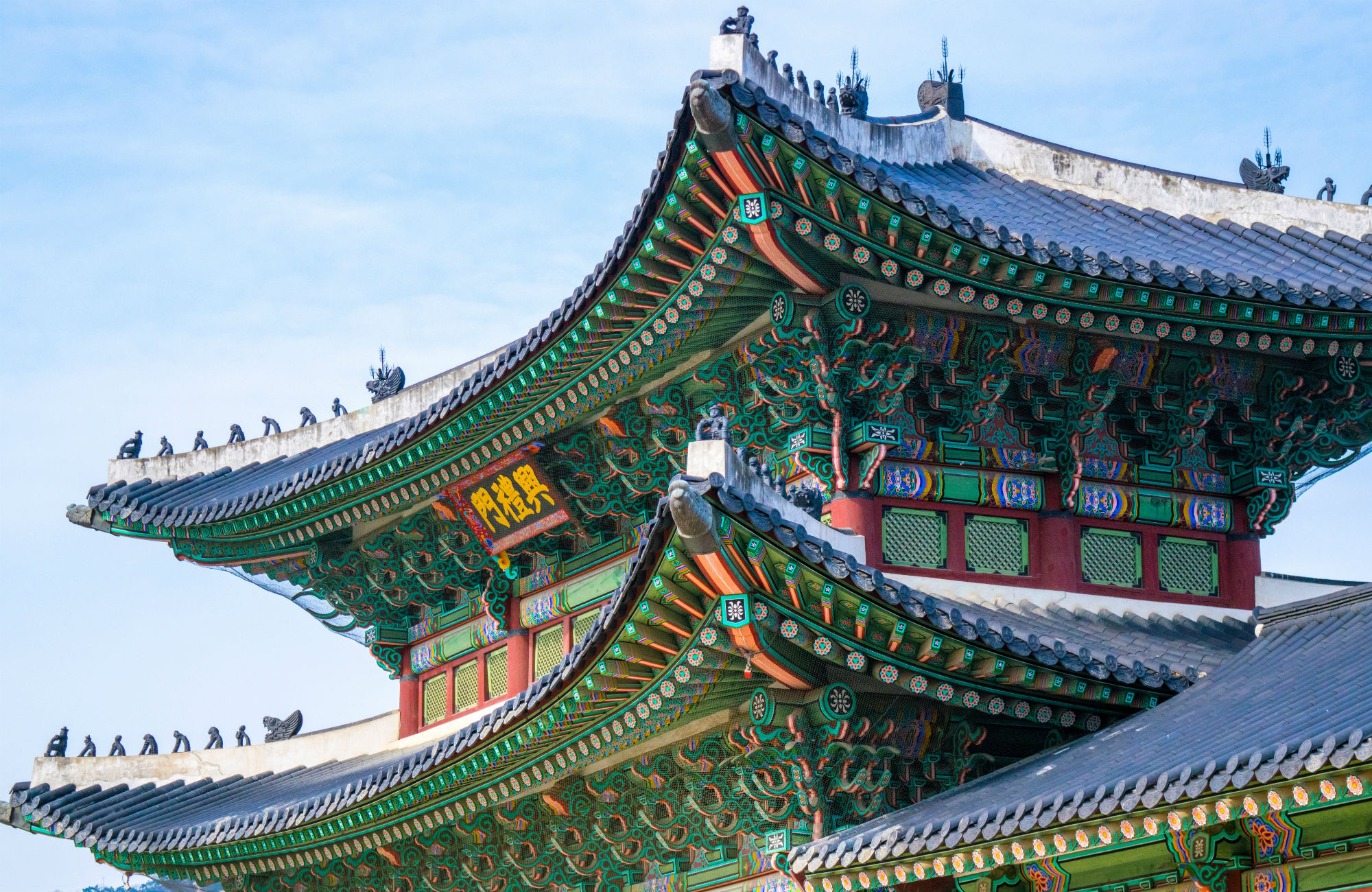Find your best time to travel to South Korea
When to go to South Korea? It's a hard decision, as each season has great experiences. This guide will help you decide the best time to visit, whether it’s for spring cherry blossoms, autumn leaves, summer festivals, or winter sports.
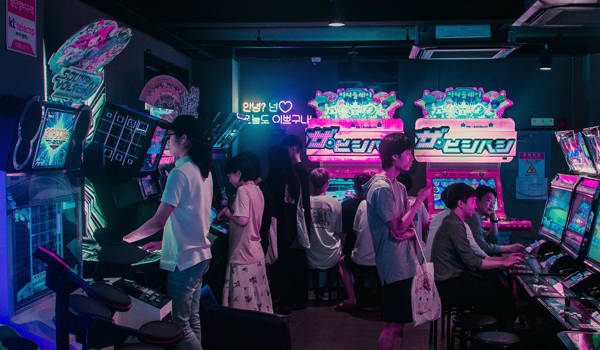
South Korea is funky, fun and gorgeous!
South Korea is a dynamic mix of ancient traditions and cutting-edge modernity, making it a must-visit destination for any traveller. Whether you're wandering through the historic palaces of Seoul, hiking the scenic trails of Seoraksan National Park, or enjoying the nightlife in Busan, there's something for everyone.
Don't miss out on a trip to Jeju Island, known for its stunning volcanic landscapes and laid-back vibe. And if you're into tech and pop culture, you'll love exploring the K-pop scene, futuristic cities, and themed cafes.
Key Takeaways
-
Spring and autumn are the best times to visit South Korea, with mild weather and loads of seasonal activities.
-
Each season has unique experiences, from cherry blossom festivals in spring to winter sports in snowy landscapes during the winter months.
Understanding South Korea's Climate
South Korea’s climate is defined by its four distinct seasons, of which the timing lines up with our own seasons. Each one brings its own weather and charm. From the blooming cherry trees in spring to the snow-covered landscapes in winter, South Korea’s diversity makes sure there’s always something to look forward to.
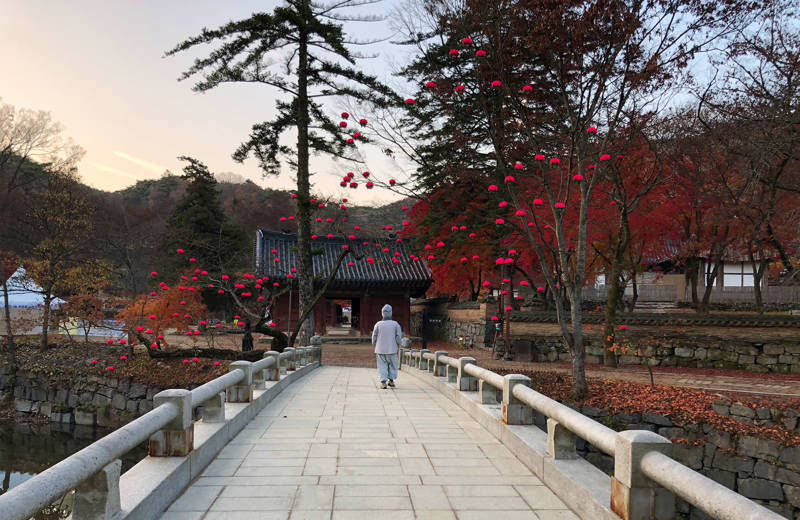
Most Scenic Travel Seasons in South Korea
Timing is key when planning a trip to South Korea. The best time to visit depends on what you want to experience. Spring and autumn are the key travel seasons, with temperatures that are just right, clear weather, and many festivals and outdoor activities.
Spring (March - May)
Spring in South Korea is marked by the blossoming of cherry trees across the country. This period, from late February to early May, is considered the best time to visit if you want to see the stunning cherry trees in full bloom. Temperatures during spring are generally mild, ranging from 15 to 18°C, creating perfect conditions for outdoor activities and festivals.
Activities during this season include strolling through cherry blossom-lined parks, hiking in national parks, and participating in local festivals.
Autumn (September - November)
Autumn in South Korea is a magical time, characterized by cool, crisp air and trees dressed in stunning fall colours. This season, from September to November, is often considered the best time to visit South Korea. The weather during autumn is typically dry and nice, with temperatures averaging 19 to 21°C, making it a great time for both outdoor activities and exploring the big cities.
Autumn activities include hiking in national parks, attending cultural festivals, and exploring historical sites. The fall colours in places like Seoraksan National Park and Nami Island make for some of the best pictures, and the atmosphere is very relaxed.
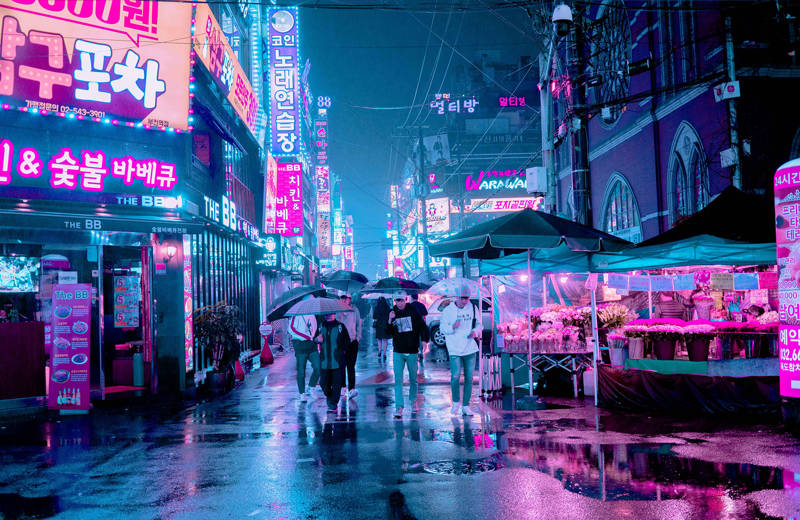
Month-by-Month Guide to Visiting South Korea
Understanding the specific weather conditions, cultural events, and seasonal activities of each month can enhance your trip to South Korea. This month-by-month guide will help you align your travel plans with desired experiences for a memorable visit.
Each month offers different opportunities, from January’s snowy landscapes to October’s vibrant autumn foliage. Awareness of monthly variations allows you to make the most of your trip and enjoy all South Korea has to offer.
January to March
January is the coldest month, with temperatures often dropping to -20°C in northern regions. Characterized by snow and freezing temperatures, it’s ideal for winter sports enthusiasts. Popular winter destinations include ski resorts like Yongpyong, which offer a range of winter sports and scenic snowy landscapes. Winter festivals, such as the Hwacheon Sancheoneo Ice Festival, attract both locals and tourists, featuring activities like ice fishing, snow sculptures, and traditional food markets.
February remains cold but less crowded, offering a quieter experience. Café hopping and visiting bathhouses are popular activities during this time.
March marks the beginning of spring, with temperatures averaging around 11°C. Early signs of spring start to appear, making it a pleasant time for outdoor activities. As the weather warms up, visitors can begin to enjoy the blooming flowers and milder temperatures, setting the stage for the beautiful spring season.
April to June
April is one of the best months to visit, with cherry blossoms in full bloom and warm temperatures. The Cherry Blossom Festival is a major highlight, attracting visitors worldwide to see the stunning pink and white blossoms. Rising temperatures create a delightful spring atmosphere ideal for outdoor exploration. Popular spring destinations include Nami Island and Jeju Island, renowned for their stunning blooming cherry trees and picturesque landscapes.
May continues to offer warm and pleasant weather, making it ideal for engaging in various outdoor activities such as hiking in national parks or exploring historical sites.
June, however, marks the beginning of the monsoon season, with temperatures occasionally dipping and humidity levels rising. The early part of June can still be enjoyable for visitors, especially before the heavy rains set in. Beach tourism begins to pick up, with destinations like Haeundae Beach in Busan offering vibrant summer atmospheres.
July to September
July is the peak of the monsoon season, bringing heavy rains and high humidity. In South Korea this is known as jangma, we call it the East Asian Monsoon. Travellers should be prepared for long periods of rain and monitor weather advisories for safety. Packing lightweight clothing and rain gear is essential for comfort during humid and wet conditions.
August remains one of the hottest months but is also the best time for beach tourism. East coast beaches, such as those in Busan, are ideal for sunbathing, water sports, and enjoying the vibrant summer atmosphere. Sokcho Beach also offers access to Seoraksan National Park, making it a perfect spot for combining beach relaxation with hiking. Additionally, cultural festivals such as the Gangneung Danoje festival will give you a unique insight into South Korean traditions.
September marks the end of the monsoon season, with cooler and more comfortable weather returning, making it a great time to explore the outdoors.
October to December
October is the peak month for fall foliage, with vibrant colors spreading across national parks and the countryside. This is an excellent time for hiking and sightseeing, as the mild weather and stunning scenery create a perfect backdrop for outdoor activities. Top autumn destinations include Seoul, Gangwon Do, and national parks like Seoraksan and Naejangsan, known for their breathtaking views of fall leaves.
November still gets you those beautiful fall colours, though temperatures begin to drop as winter approaches.
December marks the start of winter, bringing freezing cold temperatures and the first snowfall in many regions. Winter sports enthusiasts will find South Korea’s winter season ideal for a visit, with destinations like Pyeongchang offering excellent skiing and snowboarding opportunities. Winter festivals and sports become the main attractions, with events like the Hwacheon Sancheoneo Ice Festival keeping the winter vibes going. Packing warm layers is essential to stay comfortable and enjoy South Korea’s winter wonderland.

Best Places to Visit by Season
South Korea offers a wealth of destinations that shine in different seasons. Knowing the best places to visit during each season can improve your trip a lot! From the cherry blossom-lined paths of Nami Island in spring to the snowy slopes of Pyeongchang in winter, each season brings its own set of top destinations.
Spring Destinations
Spring is a time of blooming flowers and mild weather, making it perfect for outdoor exploration. Nami Island and Jeju Island are particularly popular during this season, renowned for their stunning blooming cherry trees and picturesque landscapes.
Summer Destinations
Summer is all about beach tourism and outdoor adventures. The east coast beaches, especially in areas like Busan, are amazing for sunbathing, water sports, and just enjoying the summer vibes. Haeundae Beach in Busan is famous for its lively atmosphere, lots of live music and nightly fireworks during the summer months. Also great is Sokcho Beach, which offers access to Seoraksan National Park, making it a perfect spot for combining beach relaxation with hiking.
Autumn Destinations
Autumn is the best time for enjoying South Korea’s stunning forests in all their bright colours. Seoul and Gangwon Do are top destinations during this season, known for their vibrant colors and traditional festivals. National parks like Seoraksan and Naejangsan offer breathtaking views of the coloured fall leaves, brightening up your hikes and making for amazing pictures.
Winter Destinations
Winter in South Korea is synonymous with snow sports and festive cheer. Pyeongchang, famous for hosting the Winter Olympics, is a hotspot for skiing and snowboarding. Seoraksan National Park, with its stunning winter scenery, is perfect for snowshoeing and winter hiking.
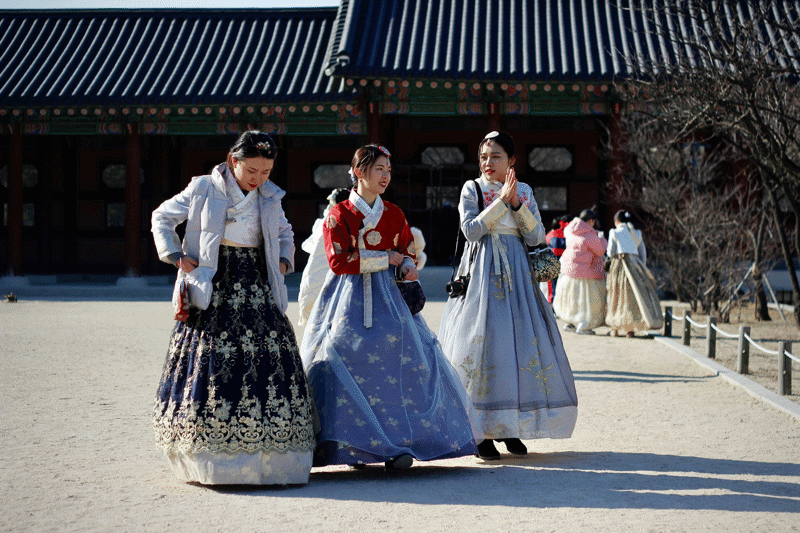
Special Events and Festivals
South Korea’s cultural heritage is showcased through numerous seasonal festivals and events. These festivals offer a glimpse into the country’s traditions and customs like the cosy Seoul Lantern Festival and the fun-filled Boryeong Mud Festival - tthere is always something exciting happening in South Korea.
Cherry Blossom Festivals
Spring’s arrival in South Korea is celebrated with numerous festivals centered around the blossoming cherry trees. The Jinhae Gunhangje Cherry Blossom Festival, held from March 25 to April 3, attracts over 2 million visitors each year and features beautiful cherry blossoms, cultural performances, and military displays. The lovely thing is that South Koreans dress up in their prettiest traditional clothing to take pictures under the pink blossoming trees, creating a sight you won't find anywhere else.
Jeju Island also hosts a popular cherry blossom festival, where the King Cherry Blossom, known for its larger blooms, can be seen in full bloom. But that's not all, Jeju Island also hosts the Jeju Fire Festival, which celebrates the arrival of Spring with a massive bonfire, k-pop concerts and more.
Summer Festivals
Summer in South Korea is marked by lively festivals celebrating the season’s warmth and energy. The Boryeong Mud Festival, held in July, is a major highlight, featuring mud wrestling, mud baths, and other mud-related activities. Attracting millions of visitors, it is known as the world’s largest mud festival.
The Gangneung Danoje festival is another notable event, featuring traditional shamanic rituals and mask dramas.
Autumn Festivals
Autumn in South Korea is a time for celebrating the harvest and enjoying cultural performances. The Seoul Lantern Festival, held along the Cheonggyecheon Stream, lights up the city with colorful lanterns and draws nearly 3 million visitors, showcasing Korean creativity and culture.
Winter Festivals
Winter festivals in South Korea transform the country into a festive wonderland. The Hwacheon Sancheoneo Ice Festival is a unique event where visitors can try ice fishing, enjoy snow sculptures, and participate in various winter activities.
Seollal, or Lunar New Year, is another major celebration, marked by traditional customs and family gatherings.
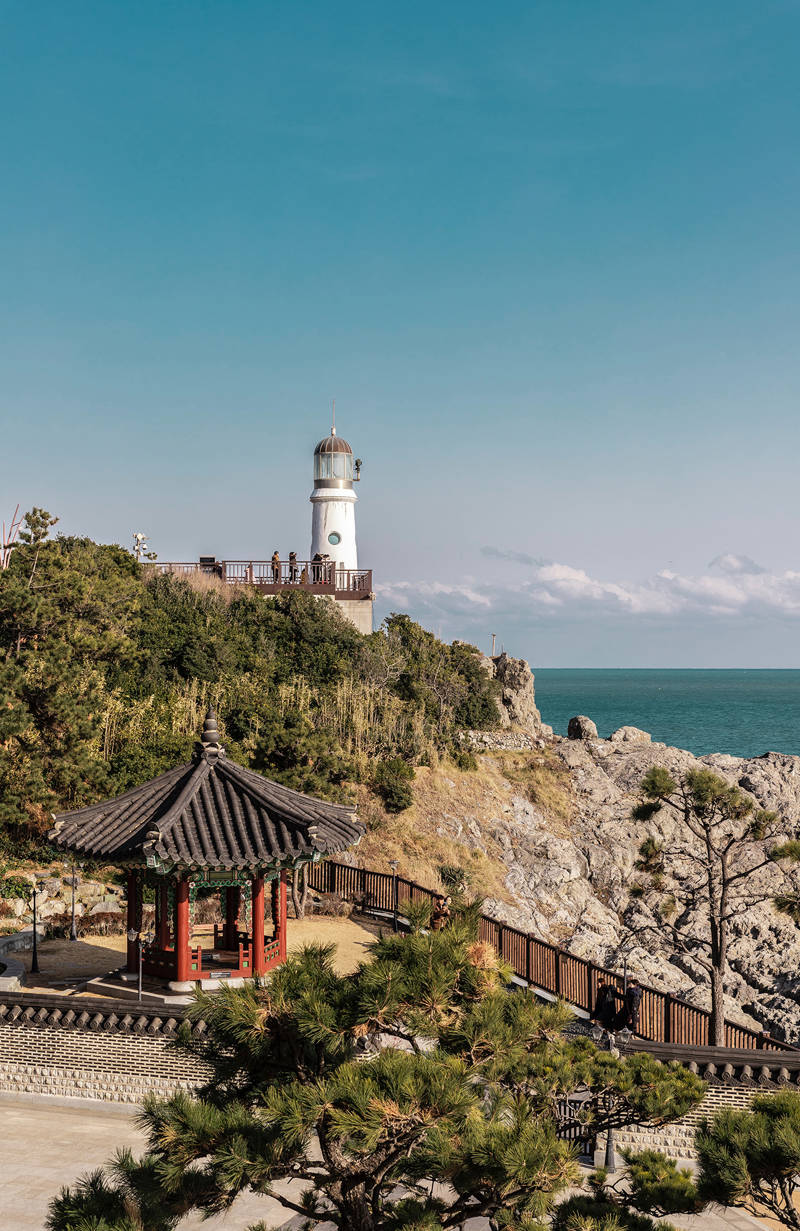
Summary
South Korea is a country that brings something special every season. From the stunning cherry blossoms in spring to the magical snowy landscapes in winter, there's always something to look forward to. Knowing the best times to visit and planning around seasonal events and activities can make your trip even better.
Exploring bustling cities, peaceful nature spots, or exciting festivals, South Korea offers unforgettable adventures. Dive into the diversity of this amazing destination and create memories that will last forever.
Frequently Asked Questions
Which month is best to visit South Korea?
The best months to visit South Korea are April, May, June, September, October, and November. You'll enjoy pleasant weather and beautiful scenery during these times!
What is the best time to visit South Korea for cherry blossoms?
The best time to visit South Korea for cherry blossoms is from late March to early April, when you can see them at their most beautiful. It's a magical experience you won't want to miss!
Are there any major festivals in South Korea during autumn?
Absolutely! The Seoul Lantern Festival is a fantastic autumn highlight, illuminating the Cheonggyecheon Stream with cosy lanterns and drawing in millions of visitors. It's definitely a spectacle you wouldn't want to miss!
Is winter a good time to visit South Korea for outdoor activities?
Absolutely, winter is fantastic for outdoor activities in South Korea! With great skiing and snowboarding options in places like Pyeongchang and Seoraksan, you'll have an amazing time.

